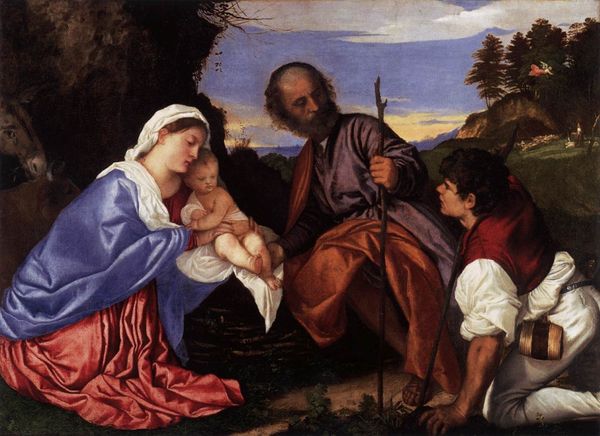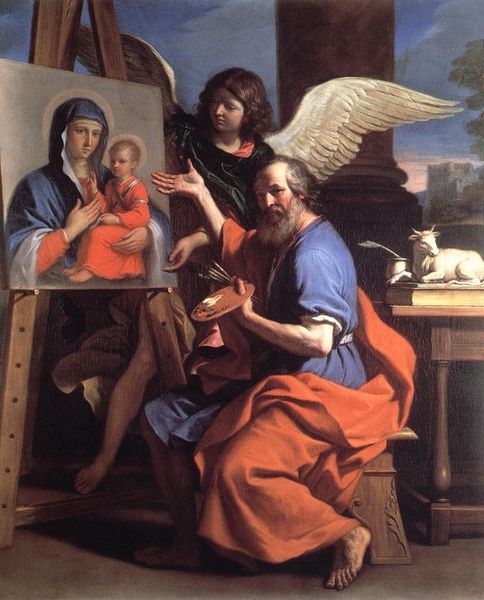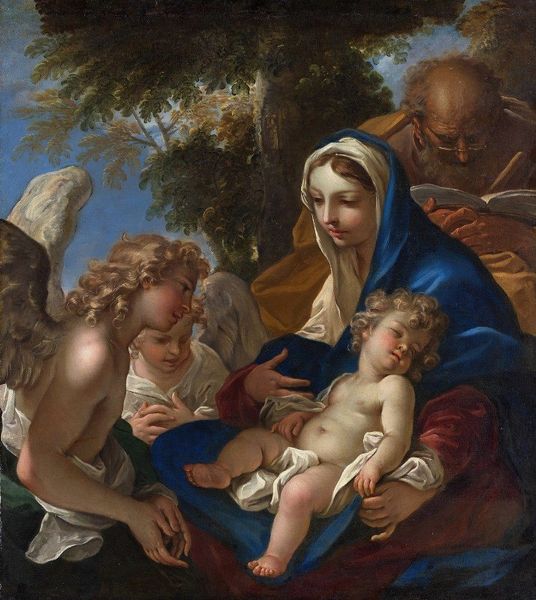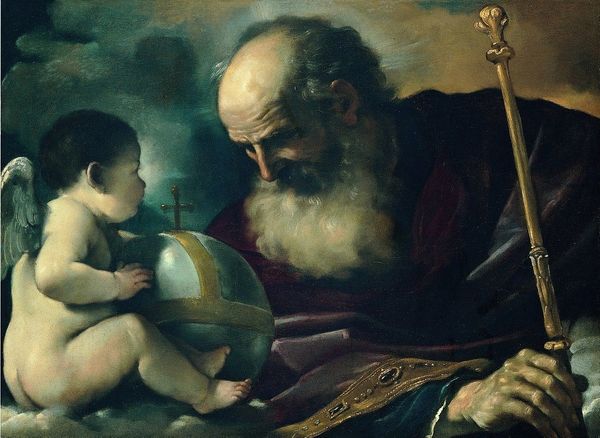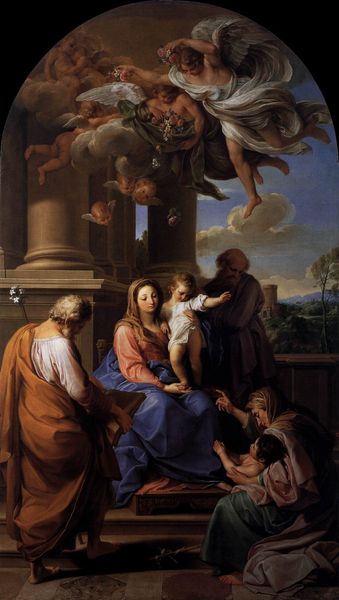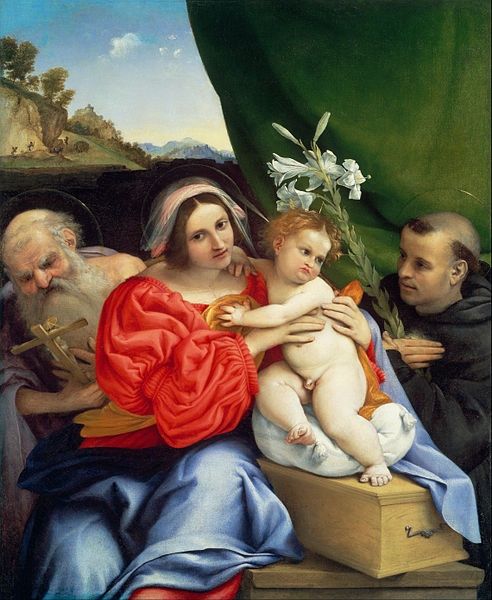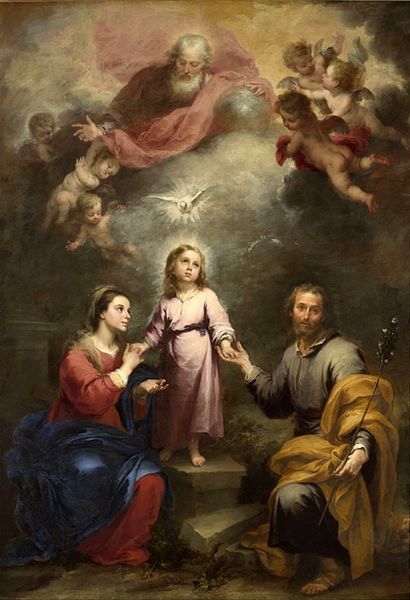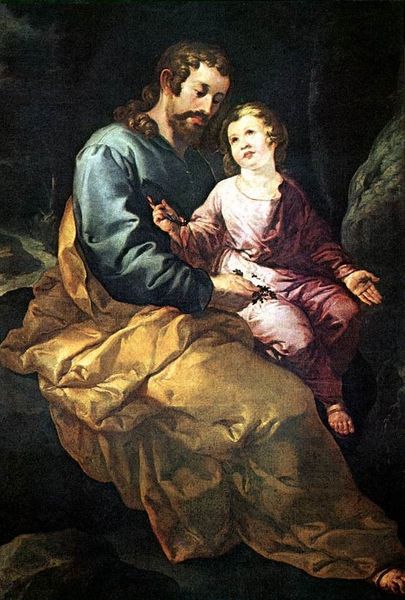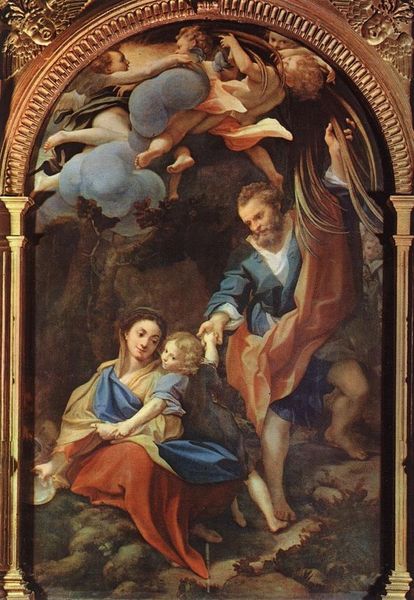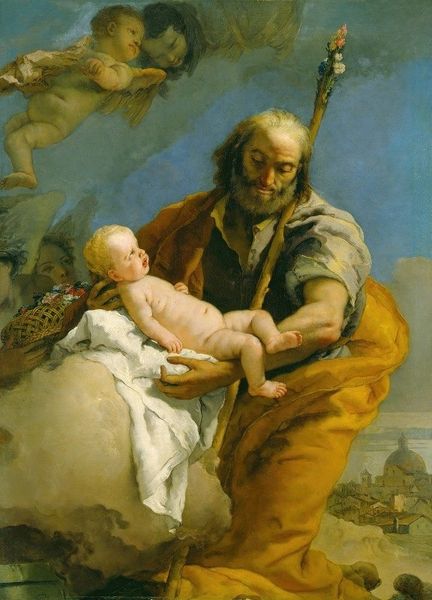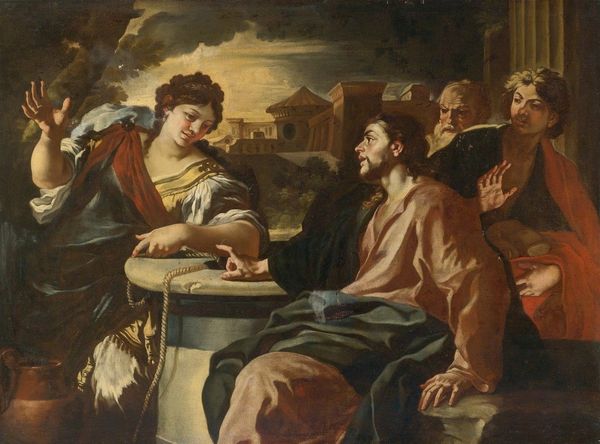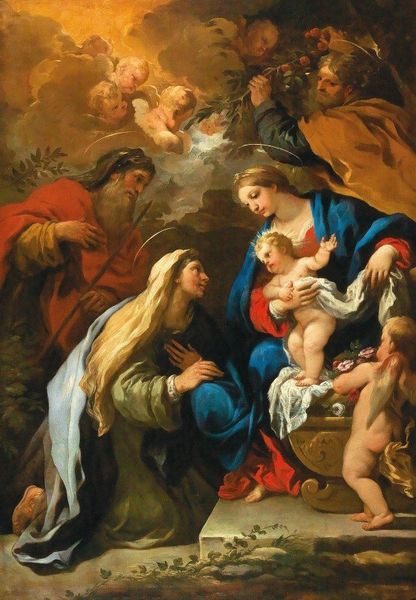
painting, oil-paint
#
portrait
#
allegory
#
baroque
#
painting
#
oil-paint
#
figuration
#
oil painting
#
group-portraits
#
history-painting
#
italian-renaissance
#
portrait art
Copyright: Public domain
Curator: Here we have a fascinating painting, attributed to Luca Giordano, titled "Abraham and the Three Angels." It depicts a scene from the Book of Genesis. Editor: It has such an airy, almost ethereal quality, doesn't it? The use of light, especially on the figures of the angels, feels particularly striking. It’s a captivating use of oil paint. Curator: Absolutely. Consider the socio-political implications of the religious narrative represented. This scene is about divine promise and the potential for change, concepts that have resonated across cultures. Notice how Abraham, likely depicted here as a symbol of faith, welcomes these messengers. It's a visual articulation of hope and covenant in, perhaps, early modern societal dynamics. Editor: From a material perspective, look at how Giordano handles the fabric. There's a tangible sense of weight and texture. The pigments used likely reflected both the artist’s access to certain materials and the patrons' desires for display, influencing how accessible or restricted were the components. And those staffs that the angels carry -- are they mere props or do they hold some significance to artisanal craft practices and symbolic power dynamics of the time? Curator: The staffs certainly invite interpretation. They could symbolize authority and divine will, or perhaps reflect patriarchal control structures within both the artwork and the wider society. Editor: Or even simple tools: staffs are used to aid our mobility through changing terrain, symbolizing labor and physical processes. The canvas itself becomes a terrain where pigment and labor create the visual narrative. Curator: I'd also like to draw attention to the ambiguity of gender within the representation of the angels. Their androgynous appearance disrupts clear-cut categories. In doing so, does this destabilization serve to create a sense of 'otherness'? Is that 'otherness' connected to spirituality? Or is the disruption of patriarchal religious visual language intended? Editor: That ties back into material consideration – how gendered was the act of creating pigments and art at the time? Were women involved in material sourcing or grinding, and does that leave a silent trace within the canvas? Curator: Precisely. These layers of inquiry are essential. Editor: Exploring both the earthly materials and those complex social layers truly gives us a richer experience. Curator: I agree, seeing it with those combined layers opens this artwork to new lines of inquiry.
Comments
No comments
Be the first to comment and join the conversation on the ultimate creative platform.
